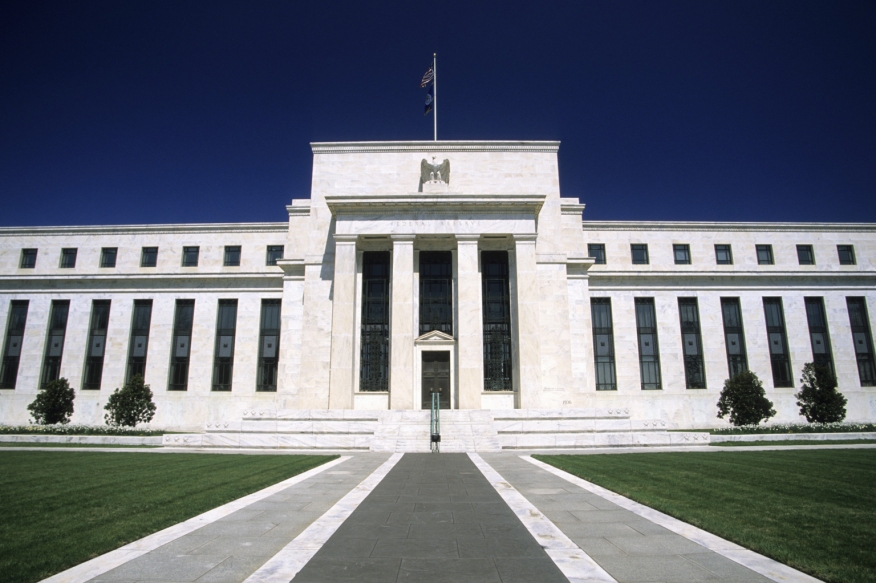
Fed Committee Gathers To Renew Inflation Fight

FOMC expected to announced 0.75% rate hike after 2-day meeting ends Wednesday.
As the Federal Reserve’s Federal Open Market Committee (FOMC) kicks off its two-day meeting today, most observers expect it to announce yet another 75-basis-point rate hike Wednesday.
A third consecutive 0.75% increase in the Federal Funds rate would represent a string of increases not seen since the 1970s. While some observers have discussed the possibility of the Fed announcing a 1% increase, CME Group, a futures trading firm, said investors in interest rate futures markets see an 82% chance for a 0.75% hike and just an 18% chance for a full 1% hike.
The Mortgage Bankers Association (MBA) has said it expects the Fed to continue raising the rate in 2022, reaching a target range of between 3.25% and 3.5% by the end of the year. Others suggest the target range will be set higher after this week’s meeting, likely at 4% to 4.25%.
Since the Fed began hiking its rate in May, mortgage rates have spiked, topping 6% last week for the first time since 2008.
As the FOMC gathers, it is dealing with a stubborn inflation rate that has resisted efforts to rein it in to the Fed’s established target rate of 2%. The consumer price index (CPI) ticked up 0.1% in August from July on a seasonally adjusted basis, after being unchanged in July from June.
The CPI’s annual rate in August, however, dipped to 8.3%, the second-straight monthly decrease in the annual rate after it hit 9.1% in June — the highest rate since the 12-month period ending November 1981.
Core inflation, which excludes the volatile food and energy categories, jumped 0.6% in August from the previous month. That was led by the shelter index, which jumped 0.7% from July, the biggest monthly increase since 1991. Year over year, the shelter index is up 6.2%.
In a commentary titled “The Fed Can’t Reduce Inflation by Winging It,” published Monday by the Wall Street Journal, two economists suggest the Fed needs a more focused effort to bring inflation down to its 2% target.
Andrew T. Levin, an economics professor at Dartmouth College, and Mickey D. Levy, a senior economist at Berenberg Capital Markets, are both members of the Shadow Open Market Committee, a group of economists formed in 1973 to provide alternative views on the economy and Fed monetary policy.
They note that inflation in services will persist even as the prices of energy and goods decrease, because the price of shelter — which they call “the single biggest component of consumer inflation” — continues to increase. In fact, it has accelerated to an annualized rate of 7.6% over the past four months, they said.
“It typically takes a year or more for changes in home prices to be reflected in rental costs and owner-occupied rental equivalents,” they said. “The Case-Shiller index, which tracks home prices, has risen more than 40% over the last two years. Housing construction and home sales are now slumping, but a further pickup in rental costs is still likely.”
They cite what they call a “crucial pitfall” in the Fed’s approach to fighting inflation — “its focus on nominal interest rates rather than the inflation-adjusted interest rate, the traditional barometer for assessing the success of the Fed’s monetary policy.”
They continue, “This week the Fed is expected to raise the federal-funds rate by 75 basis points to 3.25%. The real interest rate, however, will remain deeply negative, rendering the Fed’s monetary stance inconsistent with its inflation target. By neglecting the distinction between nominal and real interest rates, the Fed will continue to run this risk of repeating the mistakes that led to double-digit inflation in the 1970s.”
The two economists say the Fed needs to clarify its strategy on inflation, “by using a simple benchmark such as the Taylor rule, a proven guideline for adjusting interest rates in response to changes in economic activity and inflation.”
The rule was proposed by American economist John B. Taylor, an economic adviser to Presidents Ford and George H.W. Bush. In essence, it prescribes setting a relatively high interest rate in a situation when actual inflation is higher than the targeted rate.
“The Fed publishes the prescriptions from the Taylor rule and other policy benchmarks in its semiannual reports to Congress,” the economists said. “It should use these benchmarks to guide its policy for restoring price stability.”




